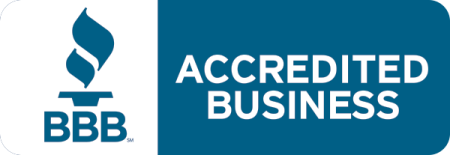Termite Swarming: Everything You Need to Know About Swarming Season

Do you hear that buzzing sound? Springtime means a return of many of the insects that were all but forgotten during the winter months. For many homeowners in the south, especially in North Carolina, one type of insect is a particularly unwelcome sight. When termites start to swarm in April and May, North Carolina homeowners know that it is time to protect their homes from these destructive invaders.
Read on to find out all you need to know about termites, so you can be armed with the knowledge you need to protect your family’s home.
Types of Termites
Let’s start with the basics. Though there are many species of termites throughout the world, in general, all species can be broken down into two distinct groups: Subterranean termites and drywood termites. Though there are many similarities between the types, there are also many distinct differences in their behavior, living habits, and swarming habits.
Subterranean Termites
The subterranean termite, as its name would suggest, nests underground. Unlike their drywood termite counterparts, subterranean termites create mud tubes to protect them from dehydration and predators when they travel. These mud tubes are usually visible on the sides of buildings, trees and other wooden structures that the termites are infesting. Subterranean termites generally swarm in the daytime, and usually swarm in the springtime between March and June.
Black House Termites
If you're noticing black house termites they are more than likely subterranean termites. Although subterranean termites are brown, they can also have a dark coloring which can make them easy to confuse with carpenter ants who are of similar color and shape.
You might also notice black wingless termites which aren't uncommon, but are another type of termite to be on the lookout for in your home!
Drywood Termites
Drywood termites are identified by the fact that they nest in the very wood that they are infesting, instead of in the ground. These insects can arrive from the air and infest structures without leaving any evidence like mud tubes behind, and without requiring ground contact with a surface. In general, drywood termites swarm in the evening, and require far less moisture than their subterranean counterparts.
Why Termites Swarm
The purpose of swarming is for termites to reproduce and create new colonies near food sources. Like ants, termites are very social creatures that thrive in a colony. Young termites develop wings in the springtime in order to disperse from their parent colonies in swarms. These “swarmers,” or “alates” fly through mud tubes in the case of subterranean termites, or through the air in cases of drywood termites. Though they don’t fly for long, the swarms are usually carried along on a breeze until they reach the ground. Once they touch back down, the insects can establish new colonies. Colonies usually swarm only once per year, though in some cases, multiple swarms may occur. When multiple swarms occur in a season, they are generally smaller swarms than the first occurrence.
When Do Termites Come Out?
Termites are most active during the swarming season which normally occurs from August to November as well as Early Spring. This is when termites are leaving their colonies in an attempt to expand and form new colonies.
How to Identify a Termite Swarm
Termite infestations happen in the blink of an eye, so it is important to be able to identify termite swarms quickly and correctly. The swarming stage is when many termites are ready to establish a new colony and reproduce to fill that colony.
In many ways, termite swarmers resemble flying ants, and they don’t come alone! Termite colonies begin forming immediately after swarmers hit the ground in a suitable spot, and termites are good at making homes just about anywhere that has a cellulose source and a healthy amount of moisture--exactly the kind of environment that your house provides!
Here’s how to tell the difference between termite swarmers and flying ants:
- Antennae: Termites have straight antennae while the antennae of ants are bent.
- Wing structure: Termite wings will be of identical length, while ant wing length varies.
- Body: Ants have a pinched waist, while termite waists are more straight.
Another way to identify if you have a termite swarm is to look around the entry site, usually a door or window sill, for discarded wings. Swarming termites have temporary wings that fall off soon after landing. If you see discarded wings where you see the swarm, chances are it’s not flying ants!
So What Does This Mean for My Home?
If you’ve identified that you have a termite infestation on your hands, it’s important to act quickly. Termite swarmers begin to establish a new colony immediately after landing in a suitable location, and infestations can occur before you know it.
The first thing to do is identify what type of termite you have in your home. One of the easiest ways to do this is to evaluate the damage that the termites have done to your home.
- Subterranean termites live in the ground, and their damage starts there too. If you have a subterranean termite infestation in your home, the first place you should check for damage is the parts of your house that are closest to the ground--especially the crawlspaces. Damaged wood structures in your crawl space along with visible mud tubes along walls and other structures in the vicinity.
- Drywood termites create a substantial amount of damage in the wood that they infest. To check for this termite species, inspect your roof or attic for signs of termites burrowing into the wood, like small holes in wooden surfaces. Any wood surfaces that are directly exposed to the outdoors are particularly at risk of infestation and eventual damage.
I Found Signs of a Termite Infestation, What Now?
If you’ve inspected your home and you’ve found signs of infestation, don’t panic! To stop the insects from causing further damage to your home, identify the specific infestation sites. That’s right, it’s time to go termite hunting. Take a flashlight and a probing device, like a screwdriver, and start inspecting your surfaces. Tap on wood and listen for hollow sounds, look for holes in wooden surfaces and look for mud tubes or adult insects to determine where they are hiding out in your house. Once you have determined where the termites are living, it is much easier to determine their entry point, and determine what kind of termites you are dealing with.
How to Prevent Termite Damage
Termites cause thousands of dollars in damage in individual homes in the United States every year, affecting more than 600,000 homes. This results in an estimated $5 billion in damage annually. You want to ensure that your home isn’t one of them!
- Keep wood and wood products away from your home.
- Remove termite-infested plants from your property.
- Seal foundation cracks, fix leaky roofs, and repair indoor and outdoor water lines.
How to Treat Termite Infestations
If you’ve already got termites making a meal out of your home, there are options available for evicting them quickly. To ensure that your home isn’t contributing to that $5 billion total, utilize one of these termite treatments to beat the bugs.
- Baiting stations: Termite baiting stations work by attracting termites to a bait source several feet from your exterior wall. If you check the bait and it has been destroyed, you know there is likely a termite colony nearby.
- Liquid treatments: Liquid treatment techniques are used around the site of an infestation to eliminate termites that have already made their way into a home. These treatments are effective in making your home termite free.
Having termites is a stressful event, but it isn’t one that you have to deal with alone. For a top termite extermination service in the Triangle or elsewhere in NC, make sure you Contact Triangle Pest Control for more information, and let them take care of the wood-destroying insects before they become a real issue.



